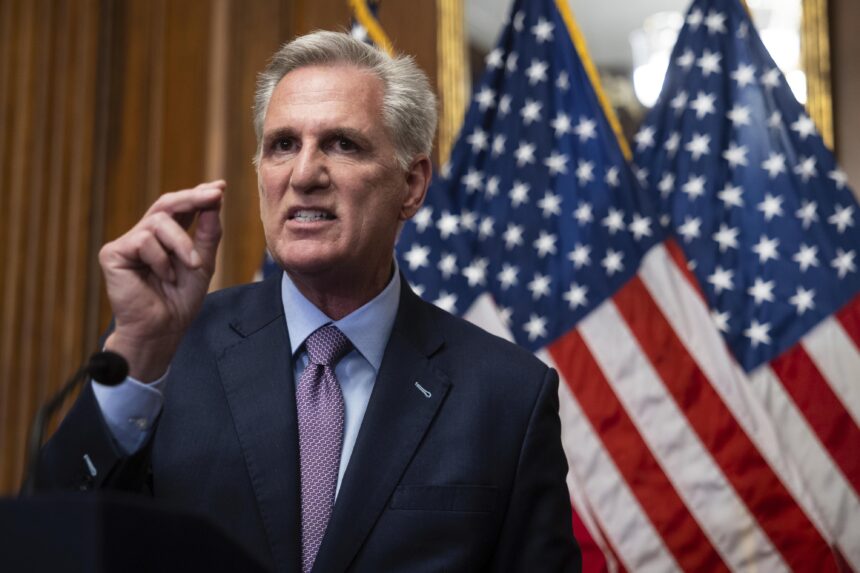In a high-stakes political maneuver ahead of the upcoming election, California Republicans have begun pouring millions into a campaign to oppose Governor Gavin Newsom’s proposed redistricting ballot measure. With mailers flooding mailboxes across the state, party leaders are mobilizing resources in an effort to sway public opinion against what they perceive as an overreach of executive power. As the battle for control of the state’s legislative boundaries looms, the implications of this campaign could reverberate through California’s political landscape, potentially reshaping not only the balance of power in the state legislature but also influencing national political dynamics. In a climate where redistricting has become a contentious issue, the early financial commitment from California Republicans signals a determined pushback against Newsom’s initiative, setting the stage for a fierce electoral showdown.
California GOP Pours Resources into Mail Campaign Against Newsom’s Redistricting Initiative
In a significant push against Governor Gavin Newsom’s proposed redistricting measure, California Republicans are mobilizing an extensive mail campaign that has already racked up millions in expenditures. With the stakes high as the initiative seeks to alter district lines in a way the GOP perceives as unfavorable, the party is investing heavily in direct outreach to voters. This campaign includes:
- Targeted Mailers: Customized materials to reach specific demographics, emphasizing potential negative impacts of the proposed changes.
- Voter Education: Informational brochures aimed at clarifying the implications of the initiative, hoping to sway public opinion.
- Grassroots Efforts: Leveraging local party members to distribute flyers and mobilize support on the ground.
The financial resources allocated to this initiative underscore the Republican Party’s commitment to framing the narrative around redistricting, framing it as a matter of electoral integrity. As they navigate the complex landscape of California’s political climate, the GOP’s strategy not only reflects their concern over potential power shifts but also aims to rally grassroots support against what they characterize as a partisan maneuver. Recent analyses indicate that mail campaigns like this can significantly influence voter turnout and perception, making the GOP’s investment a critical facet of their electoral strategy.
Strategies Behind the Millions: How Republicans Plan to Shape Voter Perception
As California Republicans embark on a multi-million dollar campaign against Governor Gavin Newsom’s redistricting ballot measure, they are leveraging a mix of traditional and innovative strategies to influence voter perception. The go-to tool seems to be direct mailers, which are projected to flood mailboxes in the coming weeks. These mailers aim to present the measure as a threat to fair representation, urging voters to see it as an effort by Democrats to cement their power. By highlighting key themes, such as transparency, fairness, and accountability, these campaigns seek to resonate with constituents who value electoral integrity.
Additionally, the GOP is employing a robust digital outreach strategy to complement their mail efforts. This includes a combination of targeted social media ads, local influencer partnerships, and grassroots mobilization through community organizations. Essential tactics include:
- Storytelling: Using personal anecdotes from constituents who have felt marginalized by the current redistricting process.
- Data-Driven Messaging: Leveraging polls and surveys to support claims about voter concerns over redistricting.
- Engagement Events: Hosting town halls and webinars to directly connect with constituents and address their apprehensions.
With a sense of urgency, party leaders are shifting to real-time messaging that adapts to voter feedback, ensuring that their narrative remains dynamic and aligned with public sentiment. This two-pronged approach, backed by substantial financial investment, seeks not only to sway public opinion but also to activate a base that feels disillusioned by the political establishment.
Impact Assessment: Potential Effects of Mailers on California’s Electoral Landscape
The influx of campaign mailers targeting Newsom’s redistricting ballot measure is anticipated to significantly influence California’s electoral dynamics. As millions pour into these outreach efforts, Republicans aim to counter the measure by emphasizing potential consequences, creating a dynamic electoral battleground. There are various potential effects this could entail:
- Increased Voter Awareness: Mailers can effectively educate voters about the implications of redistricting, potentially mobilizing them to take action.
- Voter Turnout Fluctuations: Targeted messages could either galvanize support for or against the measure, leading to fluctuations in voter turnout.
- Party Support Reallocation: These campaigns may shift support among undecided voters or soft Democrats toward Republican positions.
Considering the scale of investment, it’s essential to evaluate the message strategies employed in these mailings. An analysis of the key themes and claims made could provide insights into their overall effectiveness. The table below summarizes common themes detected in current mailer strategies:
| Theme | Description |
|---|---|
| Accountability | Highlighting the need for leaders to be held accountable for redistricting outcomes. |
| Fairness | Framing the redistricting process as a potential threat to fair representation. |
| Impact on Local Communities | Claiming adverse effects on local interests if the measure passes. |
Concluding Remarks
As the battle over redistricting intensifies in California, the significant financial commitment from Republican groups highlights the stakes involved in the upcoming ballot measure targeting Governor Gavin Newsom’s proposed changes. With millions already directed towards strategic mailers aimed at swaying public opinion, this early investment underscores the potential implications of the redistricting process on future electoral outcomes in the state. As voters prepare to cast their ballots, the unfolding campaign will not only reflect partisan priorities but also shape the political landscape for years to come. With both sides gearing up for a contentious fight, the focus now shifts to how effective these early efforts will be in influencing voter sentiment as the election draws near.









